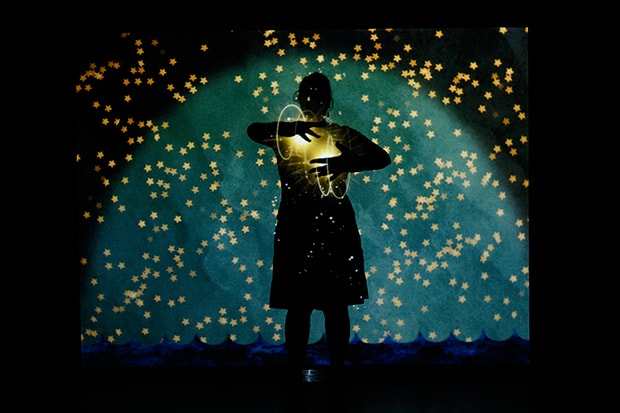There is no ontology that does not legislate for its own empowerment technologically in the sense of prescribing the means for its own enablement and … there is no technology that is not an expression of ontology, of presumptions concerning the fundaments of existence said to enable technology to be technological.
—Michael Dillon1
The concerns expressed in the CFP for Feminist Media Theory: Iterations of Social Difference led me to think again about what I have conceptualized elsewhere as an aporia between ontology and epistemology produced in relationship to developments in media technology, especially what I described then as teletechnology2 and what now I would simply refer to as ubiquitous digital media technology. I did not mean to say then, nor do I now, that there is no relationship between ontology and epistemology, but rather that the effects of media technological developments are often distributed differently across conceptualizations and experiences of space and time; history and geography; realities and knowledges, including subjugated ones; as well as attendant subject formations, bodily matters, identities, and identifications. Or to put it another way, media technological developments often (and perhaps necessarily) put the transformation of being and the transformation of knowing out of sync with one another such that the transformation of one may receive more thoughtful attention than the other—at least at first.
Recently we have seen this syncopation in attention in the shift from the epistemological concerns that dominated philosophy and critical theory over the last part of the twentieth century to the elaboration of ontological perspectives in the early-twenty-first century under the headings of speculative realism and object-oriented ontologies.3 There has been a shift from the questions of knowledge production, representation, identity, and difference raised with the epistemological perspectives of the late-twentieth century to the metaphysical and ontological questions raised at the opening of the twenty-first century about human and nonhuman agencies, organic and nonorganic life, and structures and assemblages. This is due, I would argue, in no small part to developments in digital media technology, and its attendant social, political, and economic formations, bringing us to what Steven Shaviro has called “the post cinematic,” and extending what Jonathan Beller has called “the cinematic mode of production” to what Beller more recently describes as the precarious labor of “waging our very being in the pursuit of life.”4 If epistemological concerns of the late twentieth century have both registered and formulated a reconceptualization of labor from the cinematic mode of production to the affective mode, and if culture has become inconceivable (if it should ever have been so conceived) in terms of what Timothy Murray describes as “the colossal projection of cinema as a guarantor of a culturally uniform memory,”5 then the recent shift in attention to object-oriented ontologies, and the debates these ontologies have incited might be understood in terms of a call for a philosophical reset of terms for changing perspectives on media, bodily matter, networks, processes, objects, subjects, identity, difference, relations, and relata. That is, a call to rethink the ontological grounds of knowing and representation in the wake of deprivileging or decentering human perception and cognition, and alternatively putting sensation, affect, or matter/energy generally into theoretical relief. While the history and geopolitics of social difference are implicated in this shift to ontology, they are also affected by it; the force of the aporia between being and knowing comes into play as digital media technologies push a philosophical reformulation of what we have taken as being and of the ways of knowing and representation that this reformulation instigates.
In other words, while debate around speculative realism just has begun to heat up, it is already clear that digital media technology is being redefined in terms of a subtraction of human perception as the presumed center of being and feeling. Steve Goodman, writing on sound technologies and leaning toward the philosophies of Gilles Deleuze and Alfred North Whitehead, argues, “If we subtract human perception, everything moves […] At the molecular or quantum level, everything is in motion, is vibrating.” For subjectivity and objectivity all that is required is that an entity can be felt by another entity. “All entities are potential media that can feel or whose vibrations can be felt by other entities.”6 Here media are understood in terms of nonanthropocentric affect; where “affects are transitions, gateways, and passages between dimensions,” as Jussi Parikka has put it.7 In terms of affect, media are more broadly described as “contractions of forces of the world into specific resonating milieus,” such that mediation is contingent and immanent.8 Mediation (if it should even be called that) is less about connecting two or more entities—although by the above definition of entities, they are media and they do connect other entities. Still, it would be better put to describe mediation as modulation; intensifying or deintensifying rhythmicities and forces, below and above human perception.9
- Michael Dillon, “Virtual Security: A Life Science of (Dis)order,” Millennium: Journal of International Studies 32 (2003): 531-558. [↩]
- Patricia Clough, Autoaffection: Unconscious Thought in the Age of Teletechnology (Minneapolis: U of Minnesota P, 2000). [↩]
- Levi Bryan, Nick Srnicek, and Graham Harman, eds., The Speculative Turn: Continental Materialism and Realism (Melbourne: re.Press, 2011). [↩]
- Steven Shaviro, Post Cinematic Affect (Washington: Zero Books, 2010); Jonathan Beller, The Cinematic Mode of Production: Attention Economy and the Society of the Spectacle (Dartmouth: Dartmouth UP, 2006); Jonathan Beller, unpublished remarks, 2011. [↩]
- Timothy Murray, Digital Baroque, New Media Art and Cinematic Folds (Minneapolis: U of Minnesota P, 2008) 225. [↩]
- Steve Goodman, Sonic Warfare: Sound, Affect and the Ecology of Fear Cambridge: MIT Press, 2009) 83. [↩]
- Jussi Parikka, Insect Media, An Archaeology of Animals and Technology (Minneapolis: U of Minnesota P, 2010) xxvi. [↩]
- Parikka xiv. [↩]
- My discussion of the ontologies of both process philosophers and object-oriented philosophers is not meant to be a fully developed presentation or comparison of the two approaches. I only mean to point to the ongoing debate focused on ontology and often put forth in relationship to quantum, affect, and affective labor and ahumanism. While Barad certainly addresses measure and quantum, as does Haraway, neither draws on the link between quantum measure and Deleuzian philosophy that has been so relevant for media scholars like Goodman and Parikka, as well as scholars concerned with affect, like Massumi and Parisi. Furthermore, the recent interest in Whitehead among media scholars and scholars of affect—as I will address below—is an interest that is shared (and debated) by Deleuzians and object-oriented ontologists as well. See Brian Massumi, Parables for the Virtual (Durham: Duke UP, 2002); T.S. Murphy, “Quantum Ontology: A Virtual Mechanics of Becoming,” Deleuze and Guattari, New Mappings in Politics, Philosophy, and Culture, eds. E. Kaufman and K.J. Heller (Minneapolis: U of Minnesota P, 1988) 211-229; Steven Sharivo, Without Criteria, Kant, Whitehead, Deleuze, and Aesthetics (Cambridge: MIT Press, 2009). [↩]




